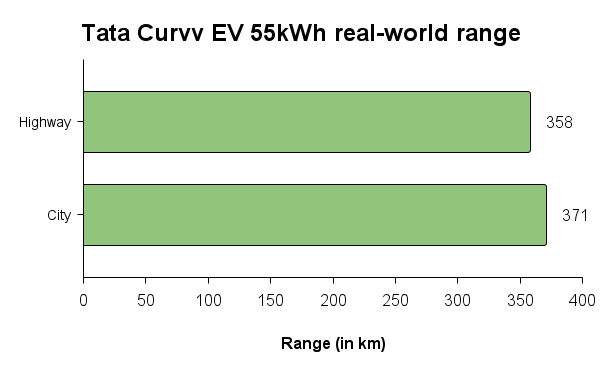[ad_1]
Nailing down a strategic focus on diversification of global technology innovation away from established powers will offer India its biggest opportunities to grow in global relevance, said Chris Miller, author of global bestseller Chip War: The Fight for the World’s Most Critical Technology and professor of international history at Tufts University in the US, in an interview with Mint.
Speaking about India’s opportunities to become part of a global semiconductor supply chain that is largely ruled by Taiwan and the US, Miller said that the one key strategy for policymakers to adopt would be strategic targeting of incentives to fill gaps in the global supply chain—rather than project “self-sufficiency” as a geopolitical and technological strategy.
“We should be very wary of the politicized term of ‘self-sufficiency’ in semiconductors and electronics—there’s no country in the world that’s self-sufficient. Even China, which projects itself as self-sufficient, is not—it relies on various parts of the world for tools, chemicals and more,” Miller said.
Scope for India to cash in
Highlighting this, Miller further underlined China’s self-interest foreign strategy as “aggressive and belligerent”—but also referred to it as one that would create scope for India to cash in on.
“Diversification of global tech supply chains around China-related threats and risks is the right way to go. For India, which is trying to play a bigger role, it is important to be targeted and specific about certain parts of the tech supply chain that makes sense to be built in India. Diversification, thus, is the right approach for public policy to truly frame what can be accomplished,” he said.
The professor was in India as a speaker at a chip design conference in Bengaluru earlier this week. Speaking with Mint on the sidelines, Miller highlighted that India is making progress to show up as a key participant of the global technology ecosystem in the future. Two such examples, he said, are being seen in US semiconductor firms setting-up chip design offices in Bengaluru, and the “rapidly emerging smartphone supply chain” in Tamil Nadu.
All of this gives India ample space to become a key stakeholder of the global semiconductor and electronics ecosystems, Miller said. “Is there space for India in the global semiconductor supply chain? Definitely. To leverage this successfully, India will have to be strategic and choose which segment it would want to focus on. It should also have a well-mapped explanation for why India would be best suited to compete in the given segment.”
Underlining the growth potential of the global semiconductor industry in the second half of this decade, Miller further added that a global geopolitical shift leading to a new order for the semiconductor ecosystem will be where India can cash in.
“It’s important to note that chip manufacturing is one bit—alongside this, most of the value actually lies in the chip design side of the supply chain. To capitalize on this, Indian policymakers must think holistically across the supply chain and recognize that manufacturing is just one part of it—there are other parts such as design where India is already more competitive, and leverage this accordingly,” he said.
New contributor
In October, market researcher and consultant Gartner projected global semiconductor revenue to grow 14% annually to $717 billion. By 2030, this figure is expected to easily cross the $1 trillion figure. India, in this space, is a new contributor—but is likely to account for revenue by 2030. In September, Mint reported that the Union government is set to roll out a fresh batch of $15 billion in incentives to boost the domestic semiconductor supply chain. The latter is in follow-up to 2021’s $10 billion in chip incentives, which led to domestic industrial conglomerate subsidiary Tata Electronics building an $11-billion chip fabrication plant, or fab, in Gujarat.
The plant has earmarked end-2026 as the tentative timeline of first production.
India also accounts for a quarter of the world’s chip design engineers, drawing investments from the likes of US chipmaker Advanced Micro Devices (AMD), Applied Materials, Lam Research and more. However, a design-linked incentive programme is yet to be introduced.
Last month, Mint also reported about a $3-billion electronics incentives programme being planned by the IT ministry to boost domestic research in electronics, and component manufacturing.
Miller underlined that these initiatives are likely to get a further boost by a wave of politicization in the chip industry.
“The new wave of politicization of the tech industry started about a decade ago, when China won a larger stake for itself in the global tech industry via a series of aggressive non-market practices. It got worse when it was paired with a more assertive and belligerent foreign policy that alienated its key trade partners. It is concerning, but it’s unlikely to change—the political factors are now deeply set in. For governments, it’s necessary to design a foreign policy in accordance with this,” he said.
Right target
Miller also added that India is right to not target the top of the semiconductor value chain—and instead focus on setting up the accessible parts of the industry.
“If countries such as China, the US or South Korea, with more advanced semiconductor ecosystems than India, cannot match Taiwan, then India is likely to struggle more. This isn’t because of India, but Taiwan’s extraordinary capabilities. Every economy, including Taiwan, started building the semiconductor ecosystem from the bottom. Building from the top in this industry doesn’t work. The right balance of incentives is crucial, and India’s incentivization is already working based on the development of the electronics supply chain in Tamil Nadu,” he said.
Further highlighting the importance of strategic incentives akin to India’s ongoing programme, Miller added that incentivization of multiple industries must be seen together, and not individually, to see their rewards.
“The biggest example is production of the Apple iPhone in China—when they started, their domestic revenue generation was just 0.7%. Today, this figure has risen to 20%, which is a huge jump. This has been possible because the overall industrial supply chain developed together, and not in one subset,” he said.
US dominance to stay
In the global scheme of development, though, Miller still expects the US to hold on to its position of dominance—although he projects ample possibility of new ‘big tech’ corporate powers replacing the current market leaders in Alphabet, Microsoft, Meta and others in the artificial intelligence wave.
“The EU is playing no role in the development of AI today. Japan, another key leader, is underperforming relative to its GDP in terms of its role in advanced technologies. Taiwan is already vastly overperforming in its impact on AI. China, meanwhile, is trying hard to compete—but is doing so from a position of relative weakness. It is taking up a tricky position in global geopolitics, which is to simultaneously take on all the major economies at the same time. India, on this note, is a rapidly growing challenger,” he said.
“Taking all of this into account, it is likely that at least by 2030, the US would remain the most influential player in global technology by a wide margin. China and India’s influences are likely to grow, while that of the EU and Japan could wane.”
Amid these shifts, Miller said that the current year should be the equivalent of 1995 in the internet economy at the turn of the millennium.
“Alphabet and Meta are deeply afraid of being replaced in such a future just like how Yahoo and Nokia disappeared. This is why they’re spending a lot of their own money to innovate in AI themselves. It’s entirely plausible for new technology superpowers to emerge, since the way we search for information today will likely change in the years to come. When that change happens, Google may not be the top company to do that,” he added.
[ad_2]










